In other posts, we have already briefly explained the Components of Ladder Logic, but in this post, we are going to go into detail about these Ladder Logic Components in IECuino. Specially, we will look at five components, which are the principal ones:
1. Inputs
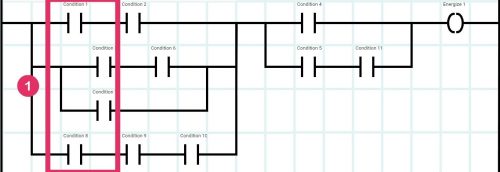
The Ladder Logic instructions located on the left side, as we have already explained, are the inputs. Their condition gets evaluated and can be TRUE or FALSE. The output of the Ladder Logic rung executes if the evaluation is TRUE. Otherwise, if it is FALSE, the PLC goes to the next rung.
2. Rung Comments
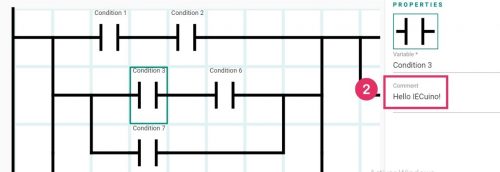
On a Ladder Diagram, they are highly significant. The comments appear when you click the condition. The objective of these comments is to explain the control processes and the logical expressions that the rung or a group of them are carrying out. The use of feedback makes it much simpler to understand Ladder Diagrams. Furthermore, it can be used to show any change that meets with the PLC programming.
3. Outputs
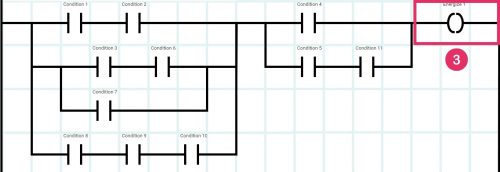
Some instructions will perform on the output side. In the example above, you can appreciate only a Control Coil instruction, but as you gain experience, you will come across and learn new instructions, and as outputs, you probably will have a lot more than one.
4. Rails
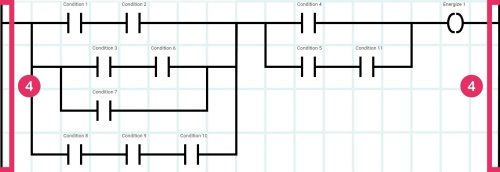
The Ladder Logic rungs locate between two side rails. The aim of these rails is to energize the rungs while they are being executed.
5. Tag Names
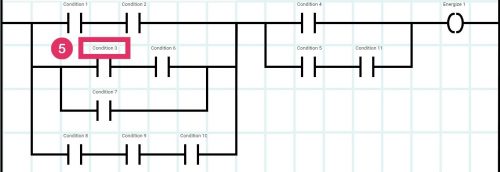
Each instruction has a tag or a type of name, in order to identify them. At the same time, these tags need a data structure element, a name or a label.
Moreover, these tags, in a situation of production, contemplate the physical element or the set of PLC they control. As you have seen in the previous examples, above each instruction there is a tag. In the example, there is labeled in each instruction “Condition 1”, “Condition 2”, “Condition 3”, etc. Moreover, these tags may have a description to the user, which will let to give the tag a text description.
6. Rungs
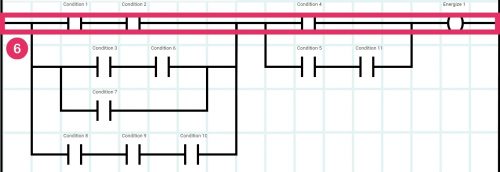
The rungs are the horizontal lines in a Ladder Diagram. Each rung represents a distinct parallel circuit branch.
